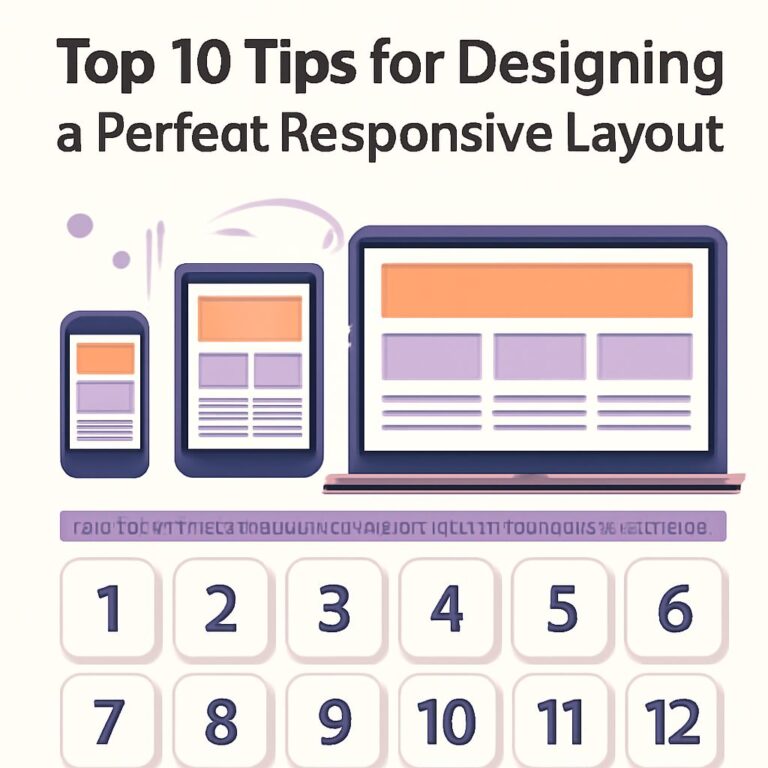Table of Contents
Introduction
In the ever-evolving world of web design, photographers need to stay ahead of the curve to showcase their talents effectively. As we step into 2025, it’s essential to embrace innovative design trends and techniques that can enhance your online portfolio. This article presents ten stunning web design tips specifically tailored for photographers, ensuring that your website not only looks visually appealing but also provides an excellent user experience.
1. Embrace Minimalism
Minimalism continues to reign supreme in web design. A clean, uncluttered layout allows your photographs to shine. Consider using ample white space to draw attention to your images, and avoid overwhelming visitors with excessive text or graphics.
Benefits of Minimalism:
- Highlights your work.
- Improves loading times.
- Enhances user navigation.
2. Utilize Full-Screen Backgrounds
Full-screen background images create an immersive experience for visitors. As a photographer, showcasing your best work as a background can instantly engage viewers. Make sure to choose high-resolution images that reflect your style and set the mood for your site.
Implementation Tips:
- Ensure images are optimized for fast loading.
- Consider using a subtle overlay to enhance text readability.
- Incorporate a slideshow feature to display multiple images.
3. Integrate Interactive Elements
Interactive elements can significantly enhance user engagement. Adding features like hover effects, clickable galleries, and lightbox image views allows visitors to explore your work in a dynamic way.
Examples of Interactive Features:
- Image zoom on hover.
- Animated transitions between gallery images.
- Interactive maps to showcase locations of shoots.
4. Optimize for Mobile
With an increasing number of users browsing on mobile devices, optimizing your website for mobile is crucial. A responsive design ensures that your site looks great on any screen size, providing a seamless experience for all visitors.
Responsive Design Tips:
- Use flexible grid layouts.
- Implement adaptive images that resize based on screen resolution.
- Ensure touch elements are easily clickable.
5. Focus on Typography
Typography plays a significant role in web design and can greatly influence the overall aesthetic of your site. Choose fonts that complement your photography style while ensuring readability.
Typography Tips:
- Select a maximum of two different fonts for harmony.
- Use headings and subheadings to create a hierarchy.
- Consider using custom fonts to enhance uniqueness.
6. Create a Consistent Color Palette
A cohesive color palette creates a strong visual identity. Select colors that reflect your brand and enhance your images. A consistent color scheme can help unify your website’s design.
Color Palette Creation Tips:
- Choose a primary color and one or two accent colors.
- Use color theory to evoke specific emotions.
- Consider tools like Adobe Color or Coolors to generate palettes.
7. Showcase Your Portfolio Effectively
Your portfolio is the heart of your photography website. An effective portfolio should be easy to navigate and visually appealing. Organize your work into categories and ensure that each image is displayed beautifully.
Portfolio Presentation Tips:
- Use grid or masonry layouts for a modern look.
- Include larger thumbnail images for better visibility.
- Add descriptions or stories behind the photos to engage viewers.
8. Incorporate Client Testimonials
Including testimonials from satisfied clients can enhance your credibility and attract new clients. A dedicated testimonials section can provide social proof and foster trust.
How to Display Testimonials:
- Use a slider to showcase multiple testimonials.
- Include client names and, if possible, their photos.
- Highlight specific projects or experiences.
9. Optimize for SEO
Search engine optimization (SEO) is vital for driving organic traffic to your website. By optimizing your site for SEO, you can help potential clients find your work more easily.
SEO Tips for Photographers:
- Use descriptive, keyword-rich filenames for images.
- Write alt text for every image to improve accessibility.
- Implement a blog to share your insights and experiences, boosting SEO.
10. Make Contact Easy
Your website should make it easy for potential clients to get in touch. Include a dedicated contact page with a simple form, and consider providing multiple methods of contact, such as email and phone.
Contact Page Essentials:
- Clear and concise contact form.
- Social media links for additional connection.
- Location information, if applicable.
Conclusion
As the landscape of web design continues to change, photographers must adapt to create websites that not only showcase their work but also provide an exceptional user experience. By implementing these ten stunning web design tips, you can ensure that your online portfolio stands out in 2025. Remember to keep learning and experimenting with new design trends to keep your website fresh and engaging. With the right design, your photography can shine brighter than ever.
FAQ
What are the key web design trends for photographers in 2025?
Key web design trends for photographers in 2025 include minimalistic layouts, immersive storytelling through visuals, and enhanced mobile responsiveness.
How can photographers improve their website’s loading speed?
Photographers can improve website loading speed by optimizing image sizes, utilizing lazy loading techniques, and choosing a reliable hosting provider.
What is the importance of mobile optimization for photographers’ websites?
Mobile optimization is crucial for photographers as a significant portion of users browse on mobile devices, impacting user experience and SEO rankings.
How can I effectively showcase my portfolio on my photography website?
To effectively showcase your portfolio, use high-quality images, categorize your work, and create an engaging layout that highlights your best projects.
What features should a photography website include for better user engagement?
A photography website should include features like a blog, client testimonials, a contact form, and social media integration to enhance user engagement.
How can SEO improve the visibility of my photography website?
SEO can improve your photography website’s visibility by optimizing content with relevant keywords, ensuring proper metadata, and building quality backlinks.









